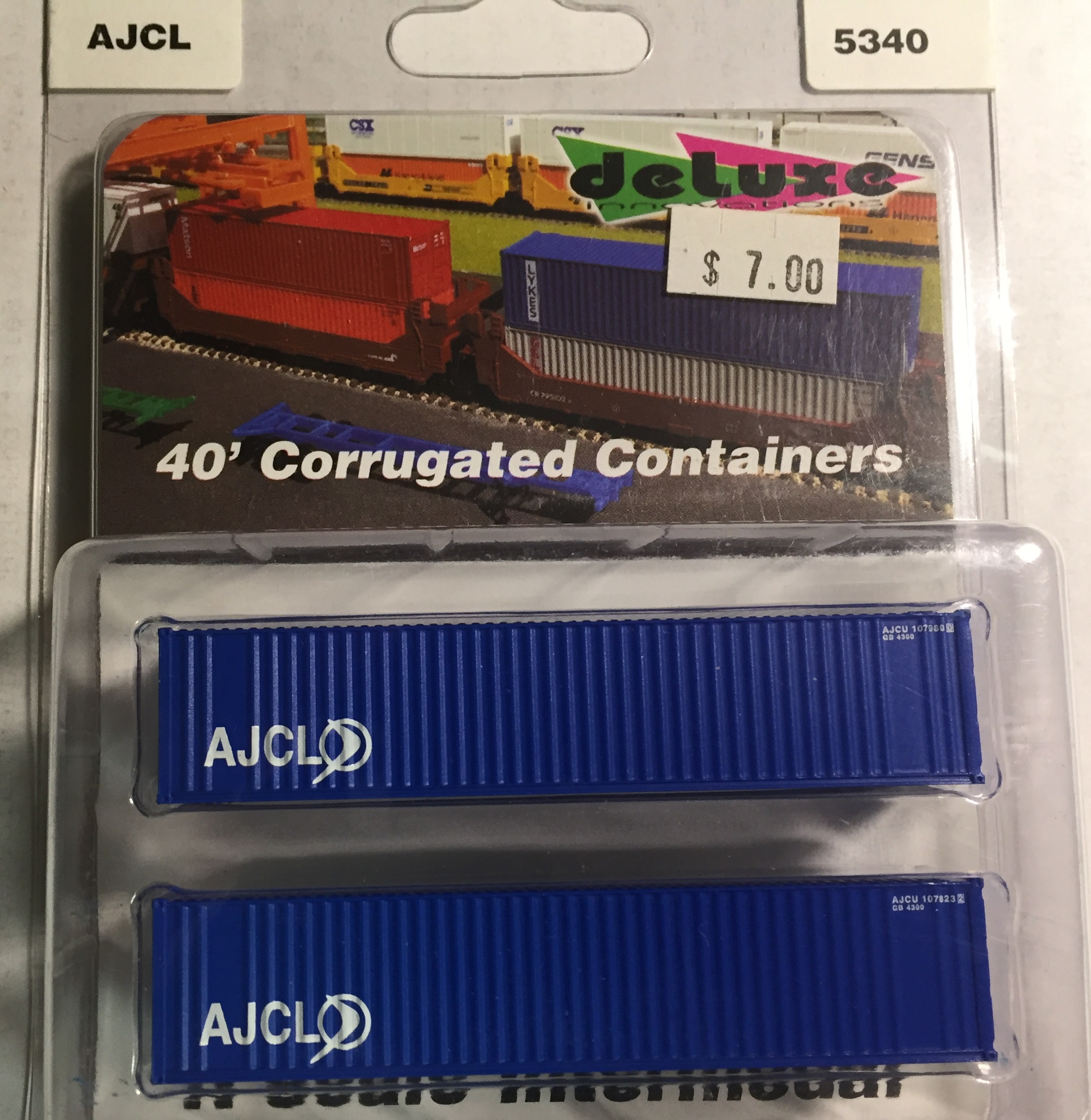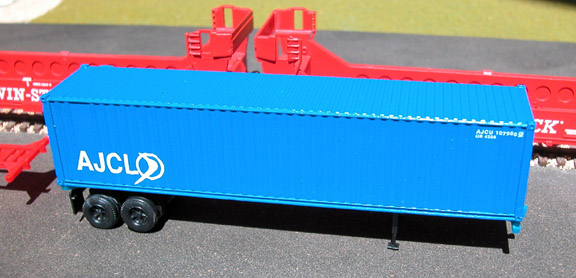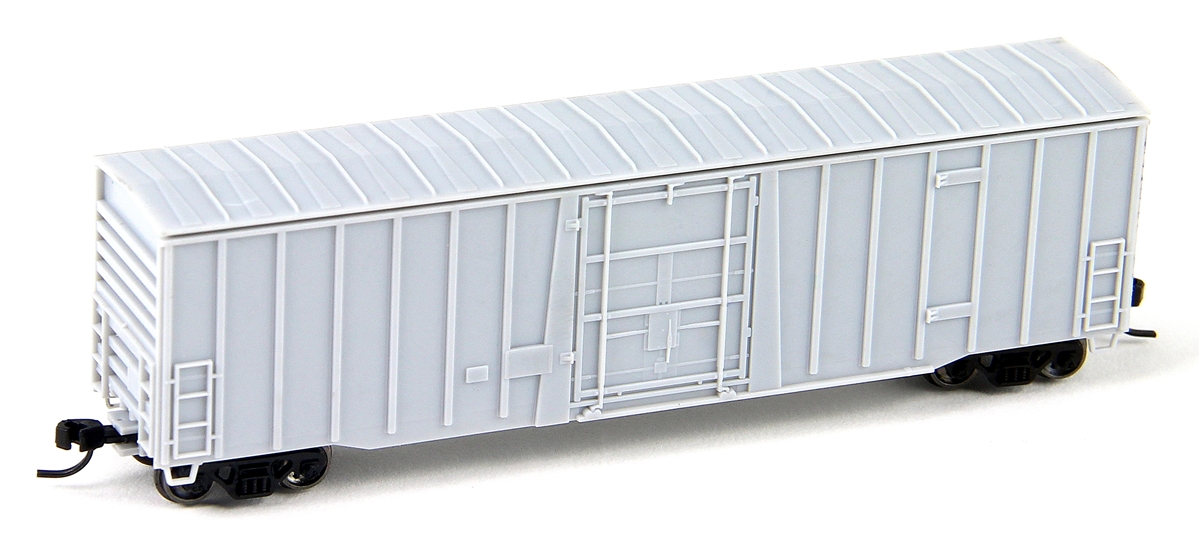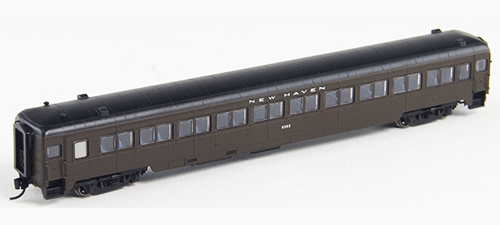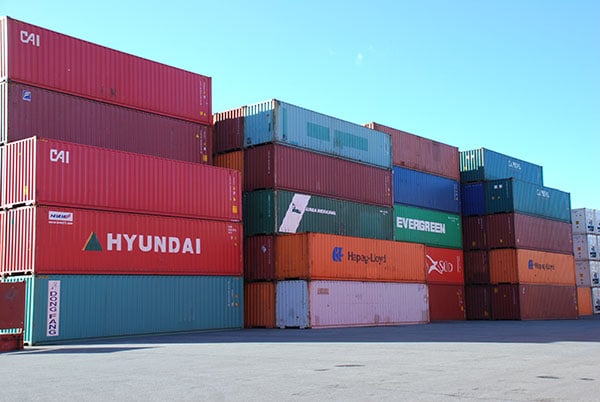Specific Item Information: AJCL - Australian Japan Container Line
Model Information: Dual Logo Panel.
Prototype History: The 40 foot container is the king of the container business. It is the most common standard container size used for international and domestic shipping. Most intermodal operations that handle overseas shipping are optimized for this container size. These containers are typically reinforced for loading, unloading and transportation by ship.
Dry containers are meant for non-refrigerated goods and hence are the most common type.
Corrugation in the construction of these containers yields much greater strength (just like with corrugated cardboard for boxes) but is more expensive to fabricate. Due to the extra strength granted by the corrugation, this is a popular type for overseas use.
Dry containers are meant for non-refrigerated goods and hence are the most common type.
Corrugation in the construction of these containers yields much greater strength (just like with corrugated cardboard for boxes) but is more expensive to fabricate. Due to the extra strength granted by the corrugation, this is a popular type for overseas use.
Road Name History: 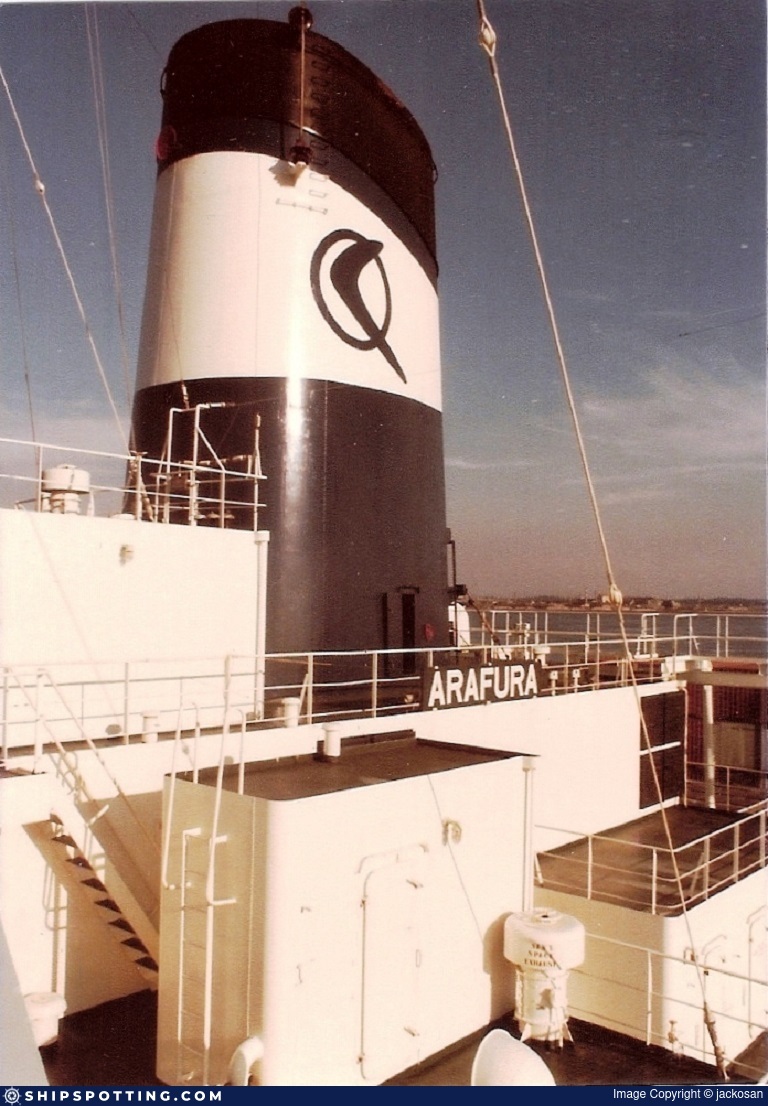 The Australia Japan Container Line (AJCL) was formed in August 1968 by Overseas Container Lines (OCL) with Australia West Pacific Line (AWPL) and Associated Container Transportation Limited (ACT - a combination of Ben Line, Blue Star Line, Cunard (Port Line), Ellerman Lines and the Harrison Line).
The Australia Japan Container Line (AJCL) was formed in August 1968 by Overseas Container Lines (OCL) with Australia West Pacific Line (AWPL) and Associated Container Transportation Limited (ACT - a combination of Ben Line, Blue Star Line, Cunard (Port Line), Ellerman Lines and the Harrison Line).
The OCL stake in this group also included the historic partners China Navigation Co. and Eastern & Australan. In 1970, CNCo. chartered the Danish dry cargo vessel NANCHAN to AJCL - an arrangement that lasted 3 years until her sale. Thereafter AJCL operated two jointly-owned 1,150 TEU cellular container ships, ARIAKE and ARAFURA (II) in a consortium that also included some of the major Japanese lines.
In 1987, P&O bought out Ocean Transport"s 53% share in OCL and became P&O Containers. In 1991 the joint venture services covered by AJCL and AAE were amalgamated to become P&O Swire Containers (POSC) in which Swire's held 26%. POSC operated ARAFURA (II) in a consortium with ANL, Mitsui OSK (MOL), NYK and Kawasaki Kisen Kaisha (K line), serving Australia to North and East Asia.

The OCL stake in this group also included the historic partners China Navigation Co. and Eastern & Australan. In 1970, CNCo. chartered the Danish dry cargo vessel NANCHAN to AJCL - an arrangement that lasted 3 years until her sale. Thereafter AJCL operated two jointly-owned 1,150 TEU cellular container ships, ARIAKE and ARAFURA (II) in a consortium that also included some of the major Japanese lines.
In 1987, P&O bought out Ocean Transport"s 53% share in OCL and became P&O Containers. In 1991 the joint venture services covered by AJCL and AAE were amalgamated to become P&O Swire Containers (POSC) in which Swire's held 26%. POSC operated ARAFURA (II) in a consortium with ANL, Mitsui OSK (MOL), NYK and Kawasaki Kisen Kaisha (K line), serving Australia to North and East Asia.
Brand/Importer Information: DeLuxe Innovations is a "wholesale manufacturer" of model trains. We manufacture scale replica train models and sell them to hobby shops and distributors worldwide. 2013 marked the 20 year anniversary of DeLuxe Innovations brand trains. There are over 25 body styles in our product line and all of the cars in our single and multi-car packs have different road numbers. DeLuxe Innovations, Inc. is owned by Dave Ferrari, founder of Squeak N Products. We are located in Midland Park, New Jersey. When Dave purchased the business it was located in Burbank, California which would have been a bit of a long commute so the move to the East Coast was planned. Our first East Coast location was in Whippany, NJ along the Whippany River.
The business was started in 1993 by George Johnsen and Roberta Liebreich in Burbank, California. They had a philosophy that just wouldn't allow using a coal car as a "stand in" for a woodchip car, or printing any and all boxcar paint schemes on a PS-1. Starting with the release of the first ever etched metal parts for a ready to run car (1994's Twinstack's metal walkways) through the full dimension underframe and etched metal roofwalk (1996's 1944 AAR Boxcar) to the challenging RoadRailer system (2000), our products have been accurate to target the modeler or enthusiast.
You can also follow DeLuxe on Twitter
The business was started in 1993 by George Johnsen and Roberta Liebreich in Burbank, California. They had a philosophy that just wouldn't allow using a coal car as a "stand in" for a woodchip car, or printing any and all boxcar paint schemes on a PS-1. Starting with the release of the first ever etched metal parts for a ready to run car (1994's Twinstack's metal walkways) through the full dimension underframe and etched metal roofwalk (1996's 1944 AAR Boxcar) to the challenging RoadRailer system (2000), our products have been accurate to target the modeler or enthusiast.
You can also follow DeLuxe on Twitter
Item created by: Powderman on 2017-12-28 13:48:34. Last edited by gdm on 2021-02-25 15:51:34
If you see errors or missing data in this entry, please feel free to log in and edit it. Anyone with a Gmail account can log in instantly.
If you see errors or missing data in this entry, please feel free to log in and edit it. Anyone with a Gmail account can log in instantly.


